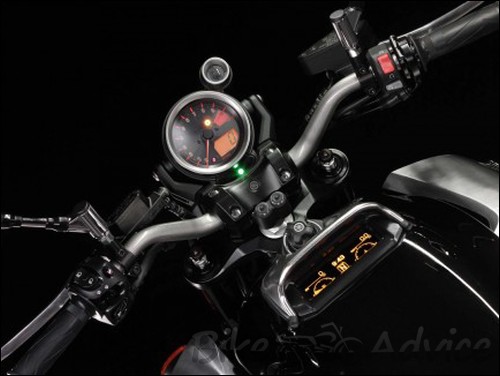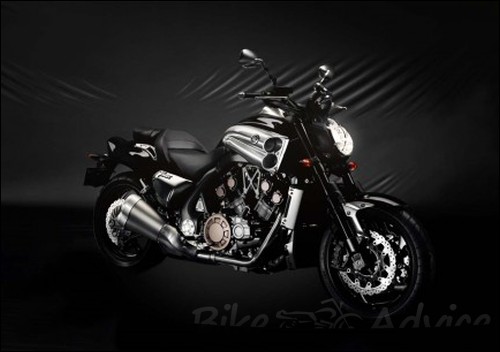Yamaha have launched the 2009 V-Max in India, this is the third bike in its stable beside the R1 and MT-01 in India and this would help Yamaha to expand its product portfolio in the country. In case you were wondering, this machine is powered by a 4 cylinder 1679cc engine that produces 200bhp with an amazing torque of 167Nm.

The Engine: A 1,679cc liquid-cooled 4-stroke DOHC 65 degree V4 engine that develops 200 PS at 9,000 rpm, together with a torque output of 166.8 Nm at 6,500 rpm, is the heart of this machine, features such as YCC-I (Yamaha Chip Controlled Intake) and YCC-T (Yamaha Chip Controlled Throttle) work together with the high capacity engine to enhance performance and drivability.
The engine also features forged aluminium pistons that are extremely light weight and hence help in improving performance and efficiency of the bike. Another technical innovation used is the Fracture-split carburized con rods, which are rods that connect the piston to the crankshaft, these were first used on the 2004 model YZF-R1, and in order to reliably handle the massive torque of the Vmax engine, this technology had to be put into use. The YCC-I (Yamaha Chip Controlled Intake) system varies the intake funnel length electronically in order for the intake valve to provide a positive intake pulse that suits the engine RPM.

Shaft Drive System: The V-max employs a shaft drive system instead of the usual chain and sprocket and the advantages that this type of a mechanism offers is not hard to figure out. The sealed shaft drive becomes handy specially in India where in monsoons, chains would have to be lubricated every once in a while, with the new system, a V-max owner can enjoy a low maintenance drive system and also a reliable one which stands ahead of traditional chain systems.
Exhaust System: The V-max also comes equipped with a 4-1-2-4 exhaust system featuring short, upswept mufflers. After leaving the cylinders, the four header pipes flow into a single chamber, where the system splits into a left and right side pipe, and then each of these divides again to give a 4-1-2-4 system. This not only enhances the throttle feel but also the sound of the engine.
Advanced ECU That Watches Emissions: An 02 sensor detects oxygen levels in the exhaust system and alters the supply of fuel via the fuel injection system to ensure that emissions are minimized, while a 3-way honeycomb catalyser ensures the VMAX stays well within emmission regulations.
Frame and Chassis: Yamahas engineering department have showcased their capabilities with the frame of the V-Max that features that is made up of a variety of gravity-cast, die-cast and extruded aluminium sections. This results in a frame that is both rigid and at the same time lightweight.
Titanium Coated Front Forks and Adjustable Suspension: A special titanium coating ensures that the forks always operate at its best as titanium helps in reduction of friction between surfaces in the forks itself. The rear suspension is a link-type Monocross system which is fully adjustable for preload, compression and rebound damping.
The bike is also equipped with a hydraulic remote adjuster for changing the preload setting, a remote control dial under the footrest helps in adjusting the compression damping. Another remote control dial beneath the left-side swing arm allows adjustment of the rear shock’s rebound damping.
ABS and ECU Controlled Braking: This bike is equipped with one of the world’s most advanced braking systems, its brakes are hydraulically actuated while being linked to the ECU in order for it to calculate the optimum braking force required to bring the machine to a safe halt. The control systems are placed under the seat and operate without interfering unless absolutely required this placement also makes the mass more centralized, something that has been done a lot even on the FZ 16. Yamaha claims to have tested this system on various road conditions.
What We Say: Import duties in India are 60% and taxes and insurance add another 30% to the price of the bike, in effect you are paying double the amount of money to own an imported machine in India, the government seems to have no plans in particular to lower these taxes and hence, this factor alone shows why imported bikes don’t sell as good as in the west or other places. For the record, this beast costs 20,00,000 Rupees, Ex showroom, Delhi. So, whats it going to be? A luxury sedan or the V-Max, the choice is yours.
– Arun


